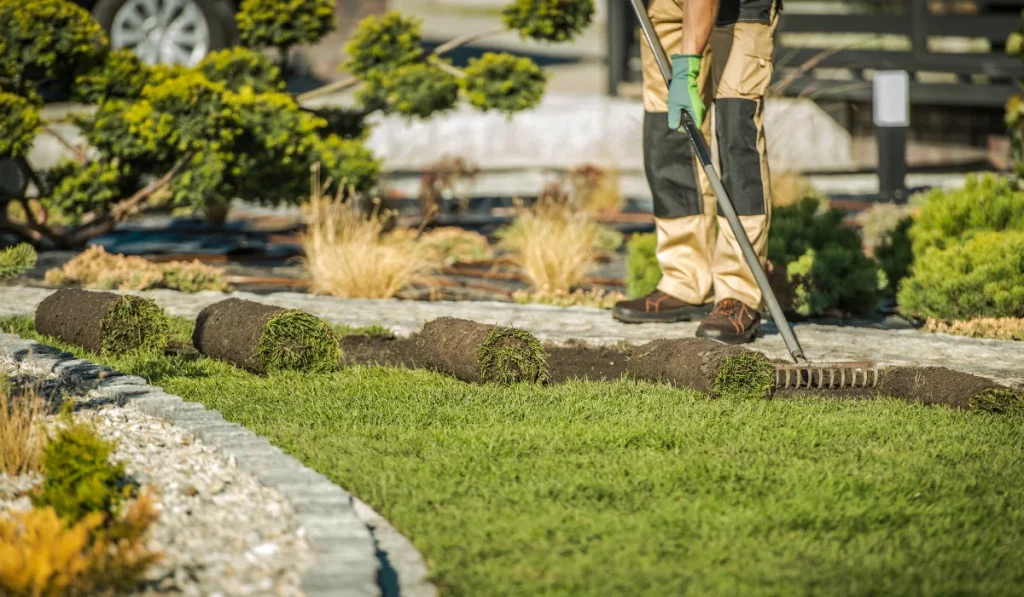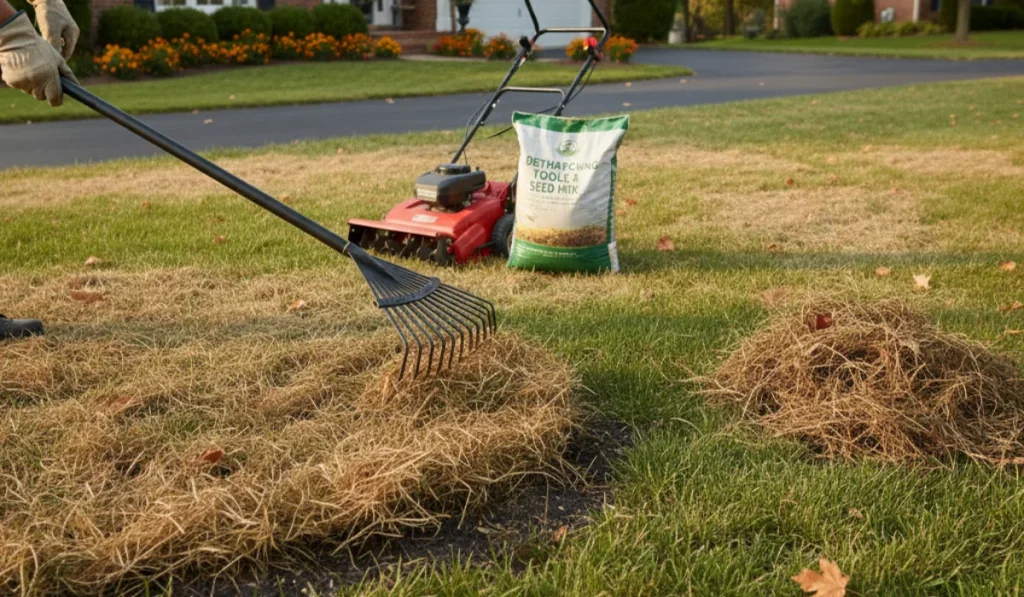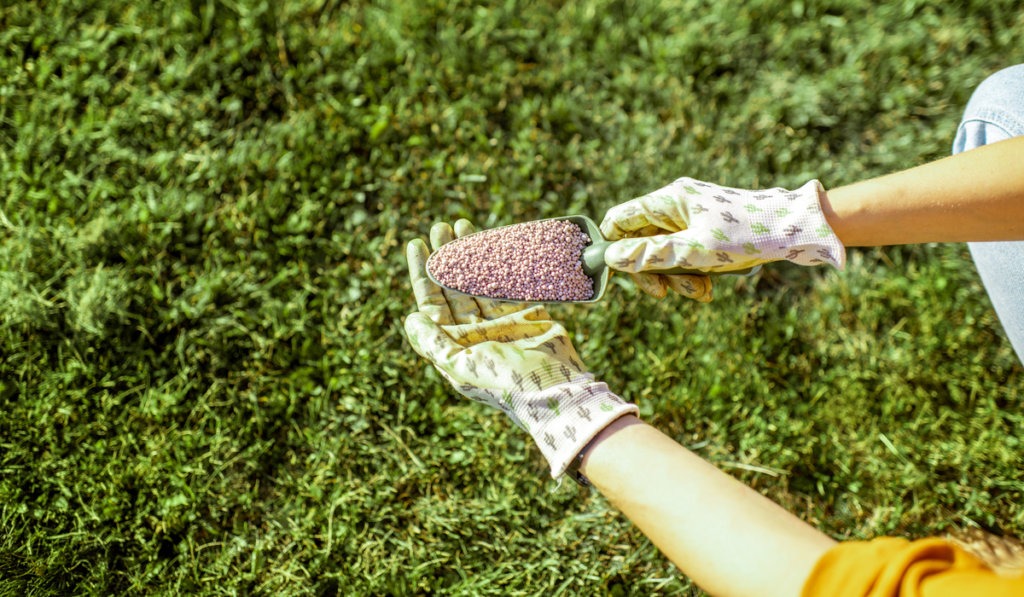Choosing the right time of the year to lay sod can make or break your lawn’s long-term success. Whether you’re installing a new lawn in Southern California’s desert heat or near the misty coastline of Monterey, your region plays a significant role in how well new sod takes root.
With over 58 counties, California offers a wide range of climates, so it’s essential to plan your site preparation, grass type, and sod variety accordingly.
In this guide, we’ll compare the best time to lay sod in coastal and inland California.
Key Takeaways
- Coastal California lawns thrive best when sod is laid in early fall or early spring during mild temperatures.
- Inland areas need sod installation in late spring or early fall to avoid heat stress and early dormancy.
- Different soil types, grass seeds, and watering habits mean homeowners must choose sod and timing based on location.
- Good lawn care begins with proper site preparation and continues with regular mowing, watering, and monitoring for signs of stress.
When to Lay Sod: Coastal vs. Inland California
To help your new lawn thrive, it’s essential to schedule your sod installation according to your local climate. Here’s how the two regions compare:
| Region | Best Time to Lay Sod | Ideal Grass Types | Considerations |
|---|---|---|---|
| Coastal California | Early fall or early spring | Tall fescue, St. Augustine | Milder temps, higher humidity, foggy mornings |
| Inland California | Late spring or early fall | Bermuda grass, Zoysia, TifTuf | Hot, dry summers, cold winters, quick drainage |
Key Factors That Influence Sod Installation by Region
Before laying sod, consider the unique conditions of your area. Here’s how coastal and inland conditions stack up:
Temperature Fluctuations
In coastal areas like Half Moon Bay or Carpinteria, you can often lay sod nearly year-round thanks to consistent temperatures. Early fall and early spring offer the perfect balance, warm soil, and cooler air that reduces transplant shock.
Inland regions, such as Chico and Temecula, experience more dramatic temperature swings. Installing sod during the growing season, when roots are active, helps prevent issues related to heat stress or winter dormancy.
Soil Conditions
Good lawn care starts with the soil.
Coastal soils are usually loamier and hold moisture better, which helps keep the soil moist for root growth.
In contrast, inland soils can be rocky, sandy, or heavily compacted. Homeowners in this area should consider soil amendments, such as compost or gypsum, and may need to bring in additional topsoil for optimal sod performance.
Before planting sod, it’s a good idea to level the ground using a lawn roller and test the soil’s pH. Healthy roots need a stable base, especially when laying high-quality sod across large areas measured in square feet.
Sun and Shade Exposure
Fog and overcast mornings are common along the coast, resulting in less direct sunlight. Cool-season grasses, such as tall fescue, St. Augustine, and Kentucky bluegrass, perform better under these conditions.
If you’re choosing between seed or sod, grass seed can work, but sod farms often offer blends specifically designed for these microclimates.
Inland homeowners typically receive full sun for most of the day, making warm-season grasses such as Bermuda grass, TifTuf, and Zoysia excellent choices for a green lawn that can withstand the heat.
Water Availability and Drought Conditions
With statewide drought concerns, especially in southern California, water conservation is more than just a good idea. It’s a necessity.
Inland areas benefit from drought-tolerant grasses that require less frequent watering once established. Use a sprinkler system to keep your soil moist during the critical first few weeks.
Near the coast, natural humidity helps retain moisture longer, but you’ll still want to monitor closely for signs of stress and avoid creating air pockets beneath the sod, which can hinder root growth.
Root Growth and Dormancy
Laying sod during the grass’s active growing season gives it the best chance of establishing deep roots.
That’s why late spring and early fall are ideal in most inland zones. Your sod has time to settle in before the heat spikes or frost rolls in. Coastal homeowners have a bit more leeway thanks to mild winters, but timing still matters.
You don’t want to plant sod right before a period of extended dormancy, which could delay root development and leave your turfgrass vulnerable to pests or disease.
Site Preparation and Lawn Care Tips
Whether you’re renovating a front yard in Santa Barbara or undertaking a comprehensive landscaping overhaul in Visalia, preparing your lawn properly is crucial.
Remove weeds, old sod, and debris. Till the soil, test it, and add amendments if needed. Then, rake and level the area to avoid low spots that can trap water or create soggy patches.
A quick pass with a lawn roller helps settle everything in place before you lay sod.
After installation, begin mowing when the grass reaches approximately 3 inches in height, and never cut more than one-third of the blade height at a time. Monitor moisture levels and foot traffic, especially during the first two to three weeks.
A consistent sprinkler schedule will help maintain even growth during the establishment phase.
Frequently Asked Questions
How soon can I walk on my new sod after it has been installed?
Avoid walking on new sod for the first two to three weeks, to give the roots time to anchor into the soil and prevents damage that can delay establishment, especially in high-traffic lawn areas.
Can I lay sod over existing grass or weeds?
Laying sod over grass or weeds prevents proper root contact with the soil. Always remove existing vegetation completely, till the soil, and prepare a clean, level surface to ensure healthy root development and long-term lawn success.
How do I calculate the amount of sod I need for my yard?
Measure each section of your yard in square feet by multiplying length times width. Add the total area and order about 3-5% extra to account for trimming, shaping, and irregular edges during installation.



